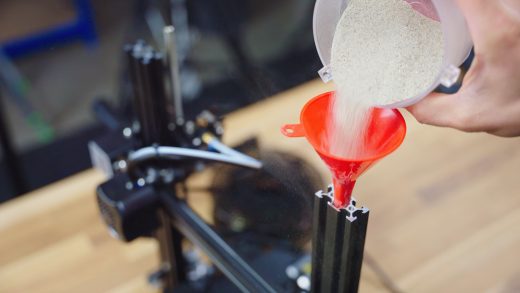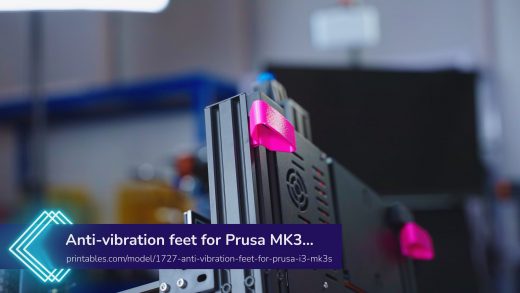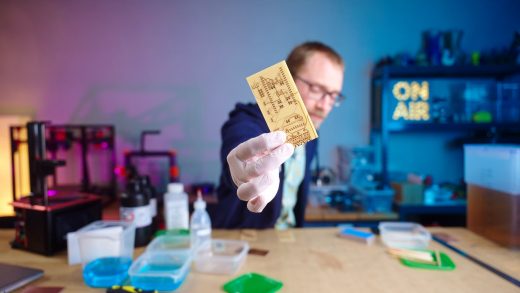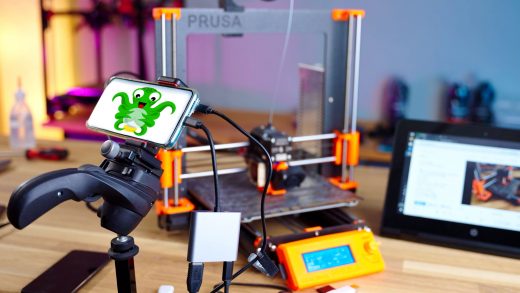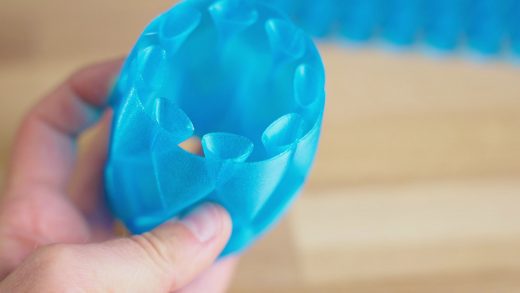I´ve used dozens of different 3D printers over the years. They look like they’re machines that are made for vastly different jobs, based on how they’re built and what they’re capable of. But they all share one thing in common: A 0.4mm nozzle. And the nozzle is one of the core things that make a 3D printer work. But why is it always a 0.4mm bore? Surely with all the different applications these printers are made for, it can’t just be a one-size-fits-all choice. And you’re right, it’s not. Honestly,Continue reading
Category: Tips and Tricks
Tips and Tricks for 3D Printing Beginners and Pros
You made me do this…
This is resonances, part 2. Last time we tried a bunch of approaches, from suspending the printer from the ceiling, bolting it to a concrete paver or sticking it onto some anti-vibration feet. And some of those worked, some didn’t, and my conclusion at the time was that you have to have some sort of dampening element in your setup for it to do anything – otherwise you’re just shifting around the excess energy that causes these vibrations instead of removing it from the system. So to test that theory,Continue reading
Wobbly 3D printer makes for better parts!
Getting rid of ringing artifacts is a bit more complex than it seems at first, but, good news, the solution that performed the best was also the simplest one. I tried four different setups, including bolting a concrete paver straight to the printer, and I want to share the results with you and I think I can even explain what’s happening in each one. For these tests, I thought I’d use one of the machines I don’t usually grab, so I got the Steality Ender-3 v2 out of storage. ThisContinue reading
The fastest way to make crisp PCBs at home!
What if you want to make a PCB, like, right now and not wait for a PCB fab to make them and send them to you? Or, what if you want other stuff etched into a copper layer that would be hard to pack into the Gerber files that board houses want? Well, if you have an MSLA resin printer, honestly, you’ve already got a pretty much perfect tool for the job. We’re going to try a quick and dirty method today, that is, one of the ways is quick,Continue reading
How bad is wet Filament really?
What I’ve been up to last week was trying to find out how much and how quickly filament absorbs water and what the results of that are. While there’s no question that filaments like PA, Nylons, as well as PVA, absolutely need to be kept in a moisture-controlled storage solution, with the more common stuff like PLA or PETG, it’s not that clear. Sure, PETG does absorb some moisture and you’ll get some extra stringing, but how bad could it be, and is PLA just generally fine to be keptContinue reading
Octoprint on Android with Octo4a
If you’ve tried to buy a Raspberry Pi recently, you’ll have noticed that that is actually quite hard to do right now. For example, for the 4GB Raspberry Pi 4 that used to sell for around 50 bucks, the cheapest offer that actually has them in stock is starting to demand scalper prices closer to 100 bucks. So if you want to run OctoPrint and still need a quality power supply and USB cable, a webcam, and SD card, you could end up spending close to 150 bucks. But whatContinue reading
Full Control GCode
Okay, you all know how 3D printing works. You start out by creating a 3D model, export that as stl or 3mf, then import that into a slicer, which then creates the gcode that the printer understands. Except that it doesn’t have to be that way. Enter Full Control GCode. This is actually the result of a research paper by Dr. Andrew Gleadall, and it lets you skip modeling and slicing and instead provides you with a scripting interface that controls every single printing move. You get full control. AndContinue reading
Test your Printers for Thermal Runaway
With last week’s video about the Flashforge Voxelab Aquila demonstrating that even in 2021, 3D printer manufacturers still mess up the basic thermal protection features on their machines, I think it’s a good idea that you know how to test them, too. What’s the danger if your printer fails these tests? Thermal. Runaway. Hopefully, today’s 3D printers are a lot harder to set on fire than the acrylic-frame Anet A8s, but if your printer for some reason stops regulating the heaters on the bed or especially on the hotend andContinue reading
OctoPrint Guide + Best Plugins
One of the most versatile pieces of tech for 3D printing is Octoprint – it’s a little webserver that runs on a Raspberry Pi and lets you remote-control a 3D printer from your computer. Or so you thought. Because the thing is, Octoprint is so much more than just a way to start and check in on prints remotely: It’s turning more and more into a full-on 3D printer operating system. There are plugins now that do everything from AI print watching over sending status infos over your favorite messengerContinue reading


